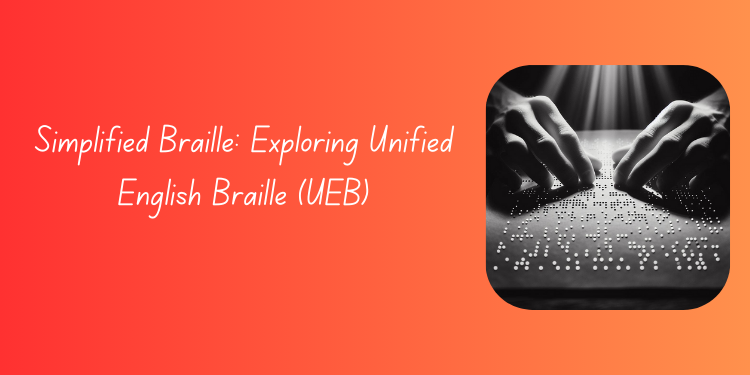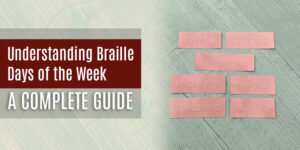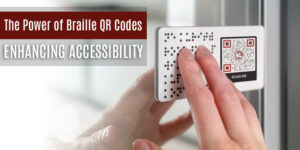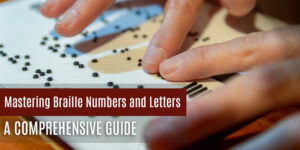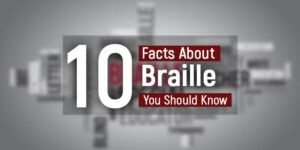Braille has evolved since it first came into use to help people with visual impairment with written communication. Over the years, different regions developed numerous English Braille codes to meet local cultural and linguistic requirements. This has led to an array of variations among codes, making maintaining consistency, especially when sharing materials across borders, challenging.
The Unified English Braille (UEB) has revolutionized this scenario by providing one universal Braille code across English-speaking regions of the globe. By amalgamating the Braille codes into a single standard system, users now find it much simpler and easier to learn and communicate using Braille.
Also, UEB helps maintain its integrity and accessibility while keeping Braille relevant and accessible for future generations.
Development of Unified English Braille
The development of Unified English Braille began with T.V. Cranmer and Abraham Nemeth’s 1991 Memorandum expressing concerns over the decreasing use of Braille and the complexity within existing systems, particularly for young learners having to navigate multiple Braille codes for different applications.
They were worried that Braille would become obsolete or the secondary means of communication for visually challenged people.
Australia was an early adopter of UEB in 2005, leading other countries gradually towards adopting it as well. By 2015, major organizations such as RNIB had made this change; all Braille production in the UK had switched entirely over to Unified English Braille production.
What Does UEB Change?
UEB was carefully created to maintain the essential characteristics of traditional six-dot Braille while making necessary modifications that meet modern needs. The significant changes within UEB include:
Spacing
UEB mandates spacing between words that are typically written together, such as “and then,” to align with standard print practices.
Removal of Certain Contractions
To minimize translation errors and confusion, specific contractions such as “ally,” “action,” and “blue” have been removed in order to eliminate translation errors and confusion.
Punctuation updates were implemented, including new symbols for parentheses, brackets, quotation marks, and dashes.
Indicators
Standard indicators were implemented for text styles like bolding, underlining, italicizing, etc.
Numeric Symbols
Operational symbols like plus and equals were added to ease mathematical and scientific notation.
Advantages of Unified English Braille
UEB Braille makes Braille production and transcription simpler by encouraging consistency while eliminating ambiguities and exceptions. It makes the production process more straightforward for users and learning quicker for newcomers alike. Furthermore, its digital adaptation enables it to accurately represent web addresses, passwords, and other online data accurately.
UEB was also designed to accommodate future expansions and integrations of new symbols without disrupting its existing structure, ensuring it remains an adaptable communication tool.
Embarking on UEB for Future Generations
Unified English Braille goes beyond standardization – it represents a commitment to maintaining its longevity and accessibility for visually impaired community members worldwide. Adopting it internationally provides a cohesive and standardized approach to Braille education and use, making UEB a powerful ally to the visually impaired community.
Conclusion
In conclusion, UEB has a profound impact in simplifying the elements of Braille. At Braille Music and More, we are passionate about spreading the benefits of Unified English Braille (UEB). Our innovative learning tools utilize UEB to provide comprehensive yet user-friendly resources for reading, writing, and typing Braille. Whether you are just getting started with Braille or making the transition from another English Braille code, our products will support your journey toward mastering UEB.
Join us in celebrating this powerful tool and experience first-hand the difference that Unified English Braille can make to visually impaired lives. For more information and resources about UEB, visit our website or reach out to our support team – together, let’s continue breaking barriers and creating a more accessible world through UEB.
You Can Also Read Our Other Blogs
- Top 10 Fascinating Facts About Braille
- Breaking Down Barriers: Is Braille Hard to Learn?
- 4 Ways Learning Braille Can Be Fun and Games
- The Creativity in Braille: Art for the Visually Impaired
- The Importance of Braille in Today’s World
- The Impact of Braille Menus in Restaurants
- 12 Things You Probably Don’t Know About Braille
- Contracted (Grade 2) Braille Explained
- 12 Things You Probably Don’t Know About Braille
- How to Write in Braille

